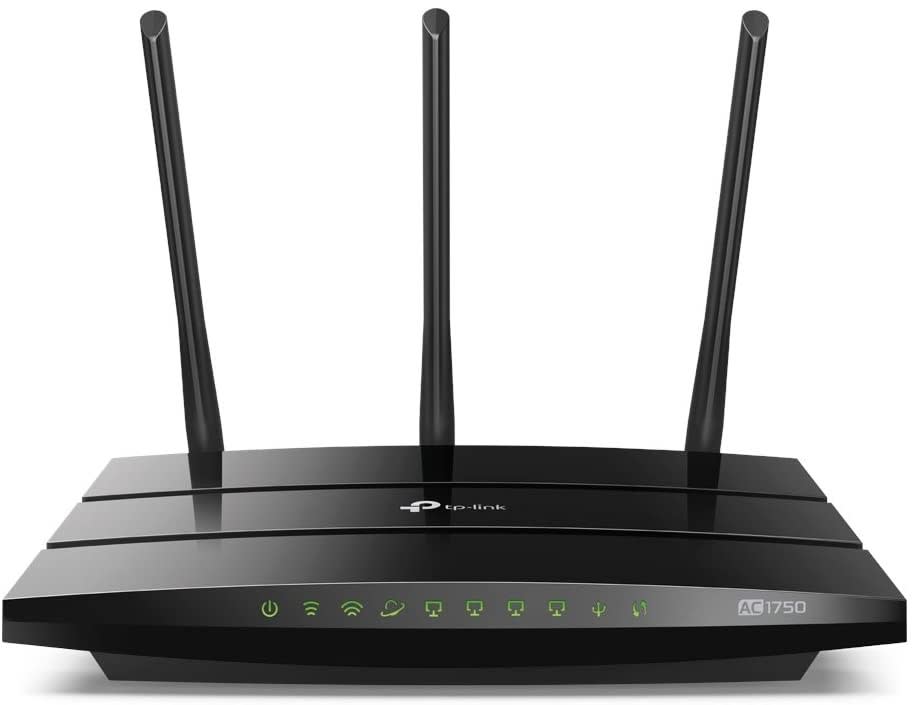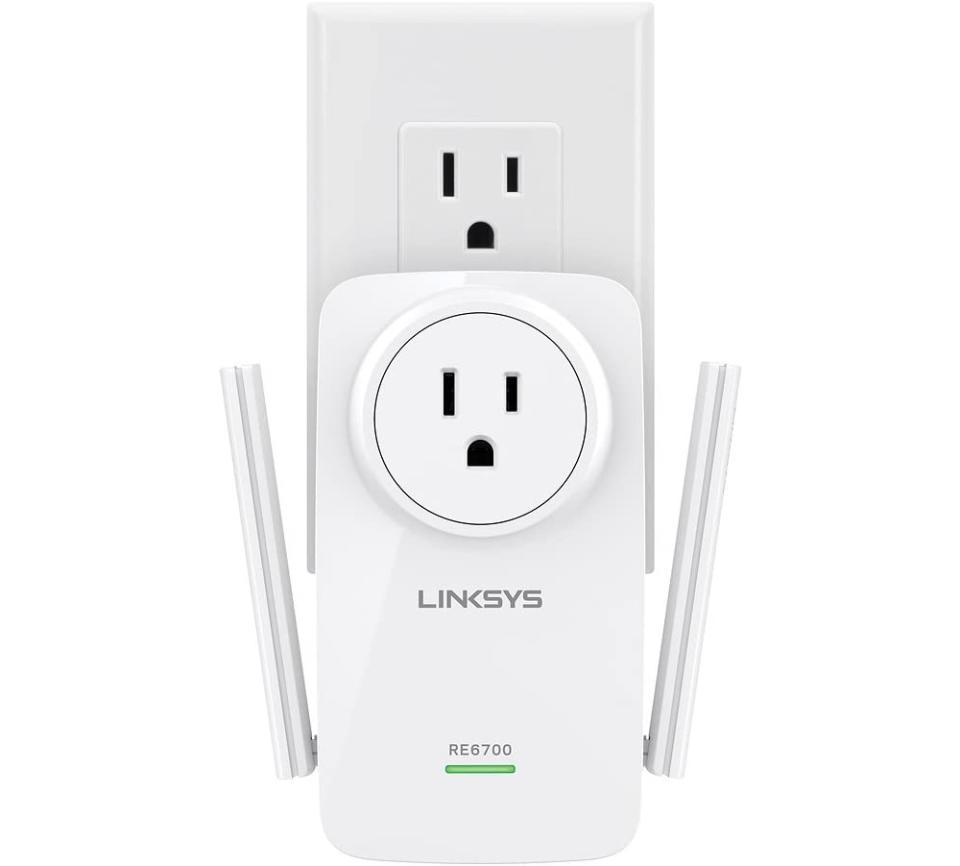How to boost your home internet speeds while you’re stuck at home: Tech Support
The majority of Americans are currently under some form of lockdown order advising them to stay in their homes in an attempt to contain the further spread of the coronavirus.
That effort has seen a massive influx of so-called nonessential employees and students across the country jumping online to continue their work and studies to limit their exposure to others.
But what if your home internet isn’t up to the task? Fear not, because there are a few steps you can take to improve your web speeds, so you can keep working, and your kids can get their school work done with relative ease.
Upgrade to a faster broadband connection
Move your router so it’s out in the open
Upgrade your router’s firmware
Get a Wi-Fi extender
Buy a mesh network router
Check your broadband speeds
Check your internet service provider (ISP) bill to see what kind of network speed you’re paying for. The federal government classifies broadband as a connection that runs at a speed of 25 megabits per second (Mbps) or faster.
If you’re running, say, 50 Mbps, and you’ve got a house with 5 people streaming video, video conferencing, playing games, and downloading large files, you could be bumping up against your bandwidth limit.
Your best bet is to upgrade to a faster data plan with your ISP. Most people with multiple devices in their homes likely won’t need anything faster than 100 Mbps.
If you’re streaming 4K video, which requires speeds of at least 25 Mbps on Netflix, plan on doing a good amount of online gaming, and downloading large files across a slew of devices, you may want to jump to 200 Mbps.
If the price of such a plan is too high for your budget, speak with your service provider. Companies including Comcast (CMCSA) and Cox are currently increasing the speed of some of their entry-level network offerings to ensure users can get online throughout April and into May.
Router placement
Believe it or not, where you put your router in your home can make a massive difference in your connection speeds. Think of your router as the center of a large bubble. Everything inside that bubble, which represents your router’s range, should be able to get online with ease.
But if you place your router down near the floor or in a cabinet, you’re shrinking that bubble’s ability to touch all of the points in your home within its range. Instead, keep it out in the open as much as possible, such as on a shelf.
In recent years, tech companies have recognized that people usually hide their routers, because they’re kind of ugly. As a result, new routers are designed to look more appealing, to get consumers to put them in an open space.
Update your router’s firmware
So you’re paying for a top-flight network connection, and your router isn’t locked away in your TV cabinet, but your connection is still sluggish.
You might simply need to update your router’s firmware. Yes, like most internet-connected gadgets in your home, your router received periodic updates from its manufacturer that can improve its performance.

To perform an update, you’ll need to log into your router by opening your web browser and visiting this http://192.168.1.1. That’s the most common IP address for commercial routers on the market. If that doesn’t work for you, you may need to check how to log in via your router manufacturer’s website. Some, like Netgear’s routers, let you sign in using www.routerlogin.com or www.routerlogin.net.
Either way you choose, you’ll need to use your router’s admin name and password to access its settings. If you haven’t changed yours, they may be located on the side of your device. Or, in some cases, the admin name will be “admin” and the password will be “password.”
If that’s the case, when you access the settings menu, be sure to change those to something more difficult to guess, as leaving the default admin name and password opens you up to potential cyber attacks.
Don’t remember your admin name and password? There should be a small button located on your router that will let you physically reset the device to its factory default settings, which you can then change to something you’ll remember.
Once you have access to your router’s settings, you should be able to download and install the new firmware to it without a problem.
Get a Wi-Fi extender
If you’re working at home, especially if you’ve got kids, you may find yourself posting up in places you’d never thought you would just to get some peace and quiet. We’re talking the bedroom, the kitchen, the basement, a closet, whatever. And while you may have been able to browse the web in those spots before, video chatting during a meeting could be out of the question.
To fix that, you may want to opt for a Wi-Fi extender. You’ve likely seen these devices before. They plug into a wall outlet, and literally extend your existing Wi-Fi connection by amplifying it to other areas of your home.

But they aren’t perfect. You’re not going to get better speeds than your current router already offers, and setting up an extender can mean creating a separate network that you have to connect to when you move into different parts of your home.
Say, for example, you’re working in your living room, but the kids want to watch TV. So you decide to head upstairs to work in the bedroom. Moving upstairs might mean having to jump on the Wi-Fi extender network. And while it’s not a major issue, it can be a pain.
Still, if you don’t mind the inconvenience, it’s a solid option.
Get a mesh network router
For my money, a mesh network router is your best option if you’re seeing slowdowns or poor connectivity in certain parts of your home. A mesh network is a series of routers that send the exact same signals across your network. It more or less creates one massive network that you can push to a number of areas of your home.
Mesh networks work by having a single node function as the main router, and at least one or two others working as an extension of the base router’s functionality.

The nodes work like your average router, sending out a bubble of connectivity, so you’ll still want to place them in the open. But since you’ll have them spread around your house, you shouldn’t see any real connectivity issues.
I set up a mesh network in my in-laws’ place and their connectivity went from virtually nonexistent in their basement to more than fast enough to stream Netflix and other video services without a problem.
Mesh routers can, however, be fairly pricey, with some 3-pack mesh routers starting at $199.
And there you have it. If you try these various methods, you should be able to get to the bottom of your network connectivity issues in your home. Happy browsing.
More from Dan:
‘They get one shot’: Why Apple probably won’t launch its 5G iPhone on time
Why Amazon could emerge from the coronavirus pandemic ‘strongest,’ according to a big-tech critic
Microsoft renaming Office 365 to Microsoft 365, bringing Teams to everyone
Got a tip? Email Daniel Howley at danielphowley@protonmail.com or dhowley@yahoofinance.com, and follow him on Twitter at @DanielHowley.
Follow Yahoo Finance on Twitter, Facebook, Instagram, Flipboard, SmartNews, LinkedIn, YouTube, and reddit.

 Yahoo Finance
Yahoo Finance 
